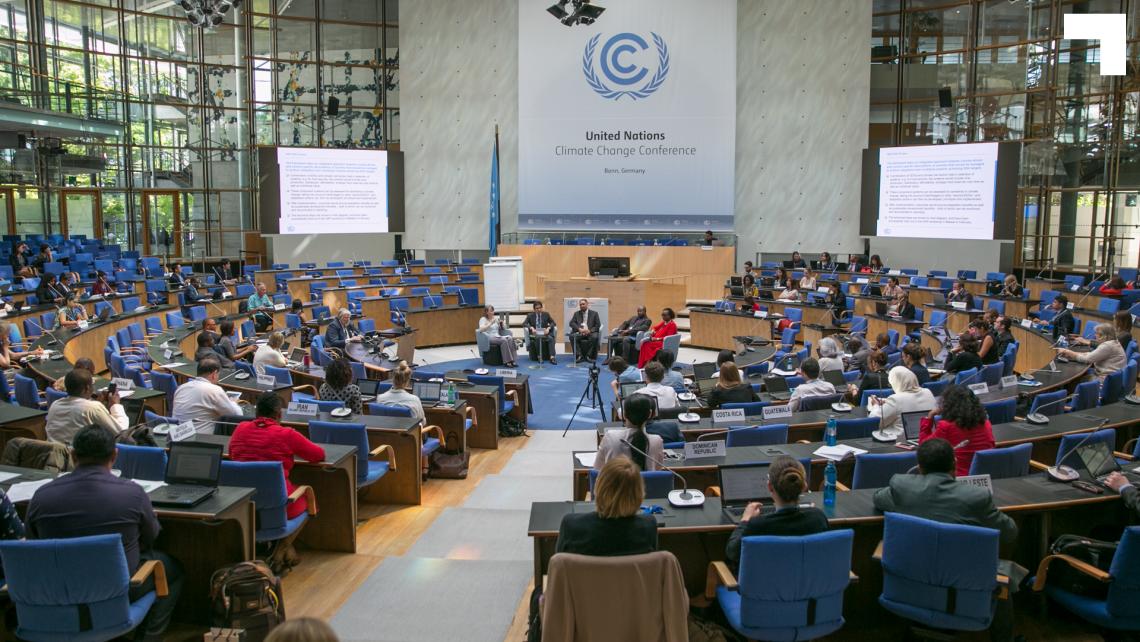(@Unsplash)
As the dust settles following COP26, many are evaluating the implications of the outcomes of the Glasgow Climate Change Conference and next steps. While there may not have been sufficient progress on all fronts, important steps forward were taken. The Glasgow Climate Pact reaffirms the Paris Agreement goal of limiting temperature rise to well below 2°C, recognizing that global climate impacts will be lower at 1.5°C warming. The Pact highlights that limiting global warming to 1.5°C requires reducing by 2030 relative global GHG emissions by 45% compared to the 2010 level and to net zero around mid-century. It also notes with serious concern that current nationally determined contributions (NDCs) fall drastically short of this target (with GHG emissions estimated to be 13.7% above the 2010 level in 2030), emphasizing the urgent need for enhanced ambition.
The completion of the Paris Rulebook, following agreement on several previously unresolved issues, is one major achievement at COP26. Notably, this includes agreement on Article 6, to operationalize use of international carbon markets in the context of the Paris Agreement. This consists of: (1) the guidance for voluntary cooperation through Article 6.2 cooperative approaches, including internationally transferred mitigation outcomes (ITMOs); (2) the rules, modalities and procedures that will govern the Article 6.4 mechanism established under the UNFCCC; and (3) further work on non-market approaches, via the establishment of a Glasgow Committee for non-market approaches (NMAs).
Resolution was finally found in Glasgow on what proved to be the most difficult issues to tackle in the context of carbon markets under Article 6 – issues which had prevented agreement at the previous two COPs, such as the relationship between the Kyoto Protocol mechanisms and the Article 6.4 mechanism as well as details on how to apply corresponding adjustments to avoid double-counting.
Several other key topics came to the forefront of the Article 6 negotiations during the two weeks. These included references to human rights and Indigenous Peoples and local communities and, finally, whether there would be explicit inclusion of REDD+.
Focusing in on REDD+, the scope under Article 6 includes both emission reductions and removals. A reasonable and generally agreed interpretation is that REDD+ activities meeting all other applicable Article 6 requirements are or will be implicitly eligible. However, as the crowds dispersed from Glasgow and returned to their desks to digest the technical details of the decisions – particularly the Article 6 decisions – varying interpretations have emerged regarding the role of REDD+ in Article 6 – with some saying it’s clearly eligible under Article 6, others saying it’s been excluded, and others noting it is not clear.
Why so much confusion around this particular aspect of the Article 6 decisions?
This confusion can partially be traced back to a very specific REDD+ proposal put forward by the Coalition for Rainforest Nations in Glasgow, which was added to earlier iterations of the draft Article 6 decision texts. This text proposed explicit inclusion of REDD+, more specifically, those REDD+ results reported to and technically analyzed through the UNFCCC process, and listed on the UNFCCC REDD+ Info Hub, which includes REDD+ results from as early as 2006.
It is broadly understood that for high-quality forest carbon markets, credits need to meet not only the Warsaw Framework for REDD+ requirements but also market-specific rules and provisions, including independent validation and verification by a third party, to ensure environmental and social integrity. Therefore, while the Warsaw Framework for REDD+ was not explicitly included in the final agreement, REDD+ per se is not excluded altogether, as several articles and blogs posted over the past weeks imply.
However, beyond the particular negotiation dynamics in Glasgow, there are other factors contributing to the confusion. To break it down, we need to look more closely at (1) the scope of REDD+ and (2) several specific text references in the final Article 6.2 and 6.4 decisions.
End of part1. Read part 2 here.
Authors
Kimberly Todd
Global Technical Advisor
Climate & Forests
UNDP
Leticia Guimaraes
Senior Global Technical Advisor
Climate & Forests
UNDP

